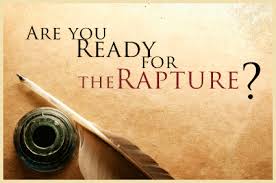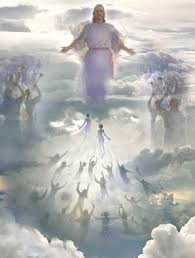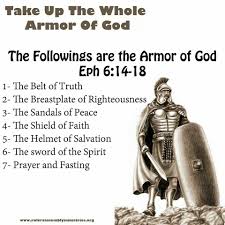
The Pre-Tribulation Rapture
I believe the best interpretation of Scripture is that the Rapture will occur at the beginning of the Tribulation. The most important reason I believe this has to do with the issue of imminence.
Over and over in Scripture we are told to watch for the appearing of the Lord. We are told “to be ready” (Matthew 24:44), “to be on the alert” (Matthew 24:42), “to be dressed in readiness” (Luke 12:35), and to “keep your lamps alight” (Luke 12:35). The clear force of these persistent warnings is that Jesus can appear at any moment.
Only the pre-Tribulation concept of the Rapture allows for the imminence of the Lord’s appearing for His Church. When the Rapture is placed at any other point in time, the imminence of the Lord’s appearing is destroyed because other prophetic events must happen first.
For example, if the Rapture is going to occur in mid-Tribulation, then why should I live looking for the Lord’s appearing at any moment? I would be looking instead for an Israeli peace treaty, the rebuilding of the Temple, and the revelation of the Antichrist. Then and only then could the Lord appear.
Focus

This raises the issue of what we are to be looking for. Nowhere are believers told to watch for the appearance of the Antichrist. On the contrary, we are told to watch for Jesus Christ. In Titus 2:13 Paul says we are to live “looking for the blessed hope and the appearing of the glory of our great God and Savior, Christ Jesus.” Likewise, Peter urges us to “fix our hope completely on the grace to be brought to us at the revelation of Jesus Christ” (1 Peter 1:13). John completes the apostolic chorus by similarly urging us to “fix our hope on Him” at His appearing (1 John 3:2-3).
Only Matthew speaks of watching for the Antichrist (Matthew 24:15), but he is speaking to the Jews living in Israel in the middle of the Tribulation when the Antichrist desecrates the rebuilt Temple.
Wrath
Another argument in behalf of a pre-Tribulation Rapture has to do with the promises of God to protect the Church from His wrath. As has already been demonstrated, the book of Revelation shows that the wrath of God will be poured out during the entire period of the Tribulation.

The Word promises over and over that the Church will be delivered from God’s wrath. Romans 5:9 says that “we shall be saved from the wrath of God through Him [Jesus].” 1 Thessalonians 1:10 states that we are waiting “for His Son from heaven… who will deliver us from the wrath to come.” The promise is repeated in 1 Thessalonians 5:9 — “God has not destined us for wrath, but for obtaining salvation through our Lord Jesus Christ.”
Deliverance
Some argue that God could supernaturally protect the Church during the Tribulation. Yes, He could. In fact, He promises to do just that for the 144,000 Jews who will be sealed as bond-servants at the beginning of the Tribulation (Revelation 7:1-8).
But God’s promise to the Church during the Tribulation is not one of protection but one of deliverance. Jesus said we would “escape” the horrors of the Tribulation (Luke 21:3-6). Paul says Jesus is coming to “deliver” us from God’s wrath (1 Thessalonians 1:10).
Symbolism
There are several prophetic types that seem to affirm the concept of deliverance from Tribulation.
Take Enoch for example. He was a prophet to the Gentiles who was raptured out of the world before God poured out His wrath in the great flood of Noah’s time. Enoch appears to be a type of the Gentile Church that will be taken out of the world before God pours out His wrath again. If so, then Noah and his family are a type of the Jewish remnant that will be protected through the Tribulation.
Another Old Testament symbolic type which points toward a pre-Tribulation Rapture is the experience of Lot and his family. They were delivered out of Sodom and Gomorrah before those cities were destroyed.
The Apostle Peter alludes to both of these examples in his second epistle. He states that if God spared Noah and Lot, then He surely “knows how to rescue the godly from trial and to keep the unrighteous under punishment for the Day of Judgment” (2 Peter 2:4-9).
Another beautiful prophetic type is to be found in the Jewish wedding traditions of Jesus’ time. After the betrothal, the groom would return to his father’s house to prepare a wedding chamber for his bride. He would return for his bride at an unexpected moment, so the bride had to be ready constantly. When he returned, he would take his bride back to his father’s house to the chamber he had prepared. He and his bride would then be sealed in the chamber for seven days. When they emerged, a great wedding feast would be celebrated.

Likewise, Jesus has returned to Heaven to prepare a place for His bride, the Church. When He returns for His bride, He will take her to His Father’s heavenly home. There He will remain with His bride for seven years (the duration of the Tribulation). The period will end with “the marriage supper of the Lamb” described in Revelation 19. Thus the seven days in the wedding chamber point prophetically to the seven years that Jesus and His bride will remain in Heaven during the Tribulation.
To say that first the church has to go through part or all of the tribulation which is God pouring out His wrath on an unrepentant world, is akin to saying that The Father needs to beat up on Jesus bride before the wedding. Personally I have never heard of any traditions or rituals that call for the Father of the Bridegroom to punish and beat the bride.
Revelation
Speaking of Revelation, the structure of that book also implies a pre-Tribulation Rapture in a symbolic sense.
The first three chapters focus on the Church. Chapter 4 begins with the door of Heaven opening and John being raptured from the Isle of Patmos to the throne of God in Heaven. The Church is not mentioned thereafter until Revelation 19:7-9 when it is portrayed as the “bride of Christ” in Heaven with Jesus celebrating the “marriage supper of the Lamb.” At Revelation 19:11 the door of Heaven opens again, and Jesus emerges riding a white horse on His way to earth, followed by His Church (Revelation 19:14).

The rapture of the Apostle John in Revelation 4 appears to be a symbolic type of the Rapture of the Church. Note that it is initiated by the cry of a voice that sounds like the blowing of a trumpet (Revelation 4:1). Since the Tribulation does not begin until Revelation 6, the rapture of John in Revelation 4 appears to be a symbolic type that points to a pre-Tribulation Rapture of the Church.
Some counter this argument by pointing out that although the Church is not mentioned in Revelation during that book’s description of the Tribulation, there is constant mention of “saints” (for example, Revelation 13:7). But that term is not used in the Bible exclusively to refer to members of the Church. Daniel uses it to refer to Old Testament believers who lived long before the Church was established (Daniel 7:18). The saints referred to in the book of Revelation are most likely those people who will be saved during the Tribulation, after the Church has been taken out of the world.
Paul’s Assurance
An interesting argument in behalf of the pre-Tribulation timing of the Rapture can be found in 2 Thessalonians. The church at Thessalonica was in a turmoil because someone had written them a letter under Paul’s name stating that they had missed the “gathering to the Lord” and were, in fact, living in “the day of the Lord” (2 Thessalonians 2:1-2).
Paul attempted to calm them down by reminding them of his teaching that the day of the Lord would not come until after the Antichrist is revealed. He then stated that the Antichrist would not be revealed until a restraining force “is taken out of the way” (2 Thessalonians 2:3-7).
There has been much speculation as to the identity of this restraining force that Paul refers to. Some have identified it as the Holy Spirit. But it cannot be the Holy Spirit because there will be people saved during the Tribulation, and no one can be saved apart from the testimony of the Spirit (John 16:8-11 & 1 John 5:7).
Others have identified the restrainer as human government. It is true that government was ordained by God to restrain evil (Romans 13:1-4). But the governments of the world are in rebellion against God and His Son (Psalm 2), and they are therefore a contributor to the evil that characterizes the world. Furthermore, the Tribulation will not be characterized by a lack of government. Rather, it will feature the first true worldwide government (Revelation 13:7).
In my opinion that leaves only one other candidate for Paul’s restrainer — and that is the Church. It is the Church that serves as the primary restrainer of evil in the world today as it proclaims the Gospel and stands for righteousness. When the Church fails in this mission, evil multiplies, as Paul graphically points out in 2 Timothy 3:1-5. Paul says that society in the end times will be characterized by chaos and despair because “men will hold to a form of religion but will deny its power.” When the Church is removed from the world, all hell will literally break loose.
Encouragement to the Believer
The Apostle Paul states that the Rapture is meant to encourage believers during this age (1 Thessalonians 4:18). And yet, what encouragement could the Rapture bring to any believer who thinks they will have to endure all the horrors of the coming 7-year Tribulation? What would be the point of the Rapture then? It wouldn’t really be as Mariano has stated, “something really great to look forward to.”
True encouragement and hope comes from the Bible’s teaching of a Pre-Tribulation Rapture. We know that the Rapture will happen before the Tribulation because according to the Bible the Church isn’t destined to endure God’s judgment on the world. God has promised the Church a rescue beforehand. For example in 1 Thessalonians 1:10 we are told “to wait for His Son from heaven, whom He raised from the dead, that is Jesus, who rescues us from the wrath to come.” (See also 1 Thessalonians 5:9; Romans 5:9; Ephesians 5:6; Colossians 3:4 and Revelation 3:10).
Evidences of a Pre-Tribulation Rapture also come from Paul in 2 Thessalonians 2:1-2 who comforted the Church of Thessalonica when he wrote, “Concerning the coming of our Lord Jesus Christ and our being gathered to him, we ask you, brothers, not to become easily unsettled or alarmed by some prophecy, report or letter supposed to have come from us, saying that the day of the Lord has already come.” The church there was concerned that they had missed the Rapture and were living in the Tribulation. Paul assures them in verse 3, “Don’t let anyone deceive you in any way, for (that day will not come) until the rebellion occurs and the man of lawlessness is revealed, the man doomed to destruction.” In other words, they’d know if they were living in the Tribulation.
The only hope that could comfort the Church Age Saint staring into the face of the horrors of the Tribulation is that they will not have to endure it. These words from Paul in 1 Thessalonians 4:18 provide that very encouragement and hope of the Lord rapturing the Church beforehand.
Regardless of when the Rapture actually occurs, we need to keep in mind that the Bible teaches that societal conditions are going to grow increasingly worse the closer we get to the Lord’s return. That means Christians will suffer tribulation whether or not they go into the Great Tribulation. And that means all of us had better be preparing ourselves for unprecedented suffering and spiritual warfare.
If you are a Christian, you can do that on a daily basis by putting on “the full armor of God” (Ephesians 6:13), praying at all times in the Spirit that you will be able to stand firm against the attacks of Satan (Ephesians 6:14-18).
If you are not a Christian, your only hope is to reach out in faith and receive the free gift of God’s salvation which He has provided through His Son, Jesus (John 3:16).

God has not appointed us to wrath!